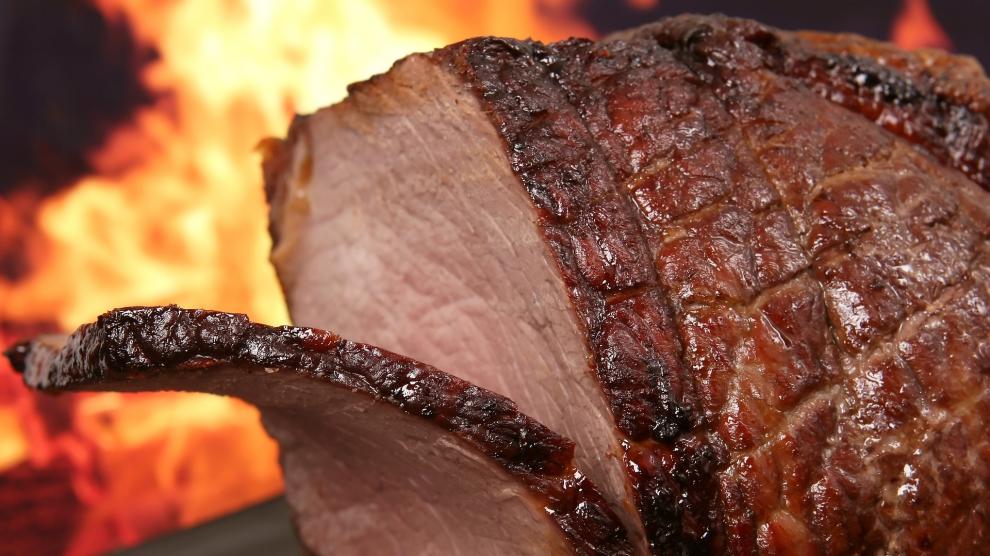In Colombia, it has been argued that one of the reasons for the increase in the domestic price of meat is due to the increase in exports, which is denied by Fedegán, and countries such as Brazil prove that this is so.
“The fact that Brazil is the main world exporter puts in crisis the argument that exporting less meat will make it cheaper in the domestic market,” says a report made by the Institute of Studies on the Argentine and Latin American Reality (IERAL) of the Mediterranean Foundation, quoted by the portal infoberdigital.com.
The study analyzed the domestic prices of meat in Brazil, Argentina, Uruguay, and Chile since they all belong to the same region, among other similarities. There, the price comparison of this food has been updated since the beginning of 2020.

“This is a particularly relevant issue, considering the weight of this product in the local consumption culture and the attempts made by the Argentine government, through different interventions on the export market, to decouple domestic prices from their international parity values,” said the report prepared by Juan Manuel Garzón and Tobías Lucero, about the export lock imposed by the Executive.
During the first two weeks of August, an online survey of prices in supermarkets was carried out to include Brazil in the comparison since, unlike the other three countries, Brazil does not have information from official sources or entities of the meat chain.
“The most important conclusion is that Brazil is currently the country with the lowest beef prices of the four countries analyzed, unlike previous surveys in which Argentina occupied that place (2020, 2021, and early 2022),” they pointed out.
In this case of a basket of 8 medium/high-quality cuts, the average value was around COP 1,547 (US$0.34) per kilo in Brazil, followed closely by Argentina, where a value of COP 1,557 was found.
Uruguay and Chile had much higher values, averaging COP 1,816 and COP 1,938 per kilogram, respectively. The cuts analyzed were rump tail, tenderloin, loin ball, rump, rump, rump, vacuum, needle (boneless), and rump.
“The fact that Argentina is no longer the country with the cheapest beef in the region, losing this leadership to Brazil, is not surprising for several reasons, structural factors and elements of the countries’ economic situation,” the report states.
Among the most important reasons, they mentioned that Brazil is currently the world’s leading exporter, surpassing the United States and Australia, which reflects important cost competitiveness.
Meanwhile, beef became more expensive in dollars in Argentina due to the delay in the official exchange rate concerning inflation, occurring since mid-2020. The authors explained this has also happened in other countries in the region, including Brazil.
But this appreciation has been 20% in Argentina against 5% in the neighboring nation.
Meanwhile, the report made a complementary comparison between Uruguay, Argentina, and Chile. In this case, based on information from public agencies and mixed institutions.
Last month, the average price of this basket of cuts was US$9.76 per kilo in Uruguay and US$8.67 in Argentina. In other words, on average, local meat was 11% cheaper than in Uruguay. In this case, 15 cuts were included.
“This gap is widening again, considering that it averaged 27% in 2020 and 11% in 2021, but by the beginning of 2022, it had closed to 3%, always in favor of Argentina. Anyway, it should be warned that, in other years, meat was more expensive in Argentina than in Uruguay (+18% in 2015 and +8% in 2016),” the study described.
The comparison with Uruguay is more difficult because both are net exporters, they clarified. While Argentina has more quantity and raw material availability to feed livestock, the neighboring nation has a more stable and predictable economy, with lower inflation, more credit, and lower capital costs.
The comparison with Chile, based on prices from public agencies and entities representing the sector, includes 13 cuts at the final consumer level. “It is observed that, in July 2022, the average price of this basket in the trans-Andean country was US$10.40 per kilo, while in Argentina, it was US$9.88. For the reference month, beef was 5% cheaper than in Chile”, they detailed.
With information from Contexto Ganadero

